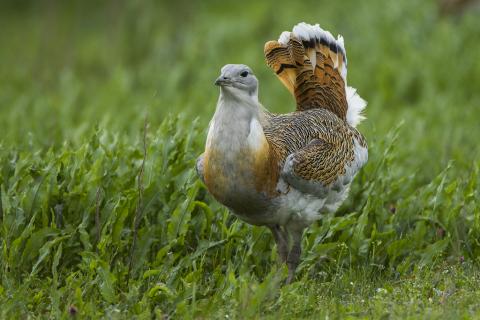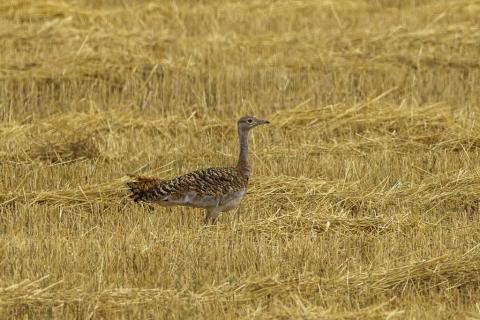Brief #
Description #
An adult male is brown above, barred with blackish colouration, and white below, with a long grey neck and head. His breast and lower neck sides are chestnut and there is a golden wash to the back and the extent of these bright colours tending to increase as the male ages. In the breeding season, the male has long white neck bristles, which measure up to 12–15 cm (4.7–5.9 in) in length, continually growing from the third to the sixth year of life.[2] In flight, the long wings are predominantly white with brown showing along the edges of the lower primary and secondary feathers and a dark brown streak along the upper-edge of the wing. The breast and neck of the female are buff, with brown and pale colouration over the rest of the plumage rendering it well camouflaged in open habitats. Immature birds resemble the female.
Measurements #
Gallery #


